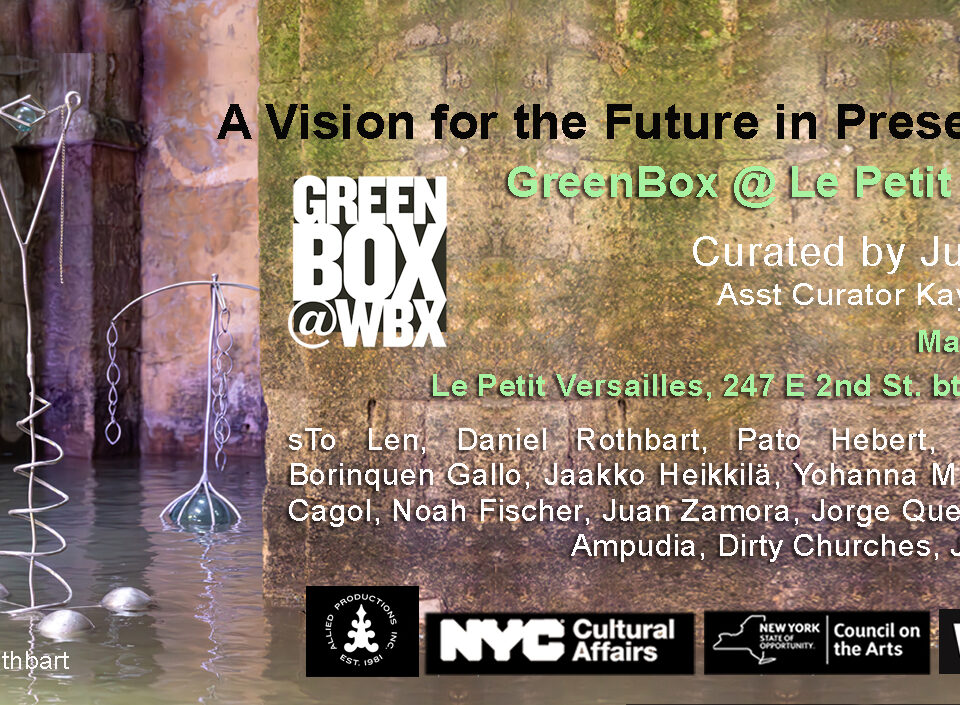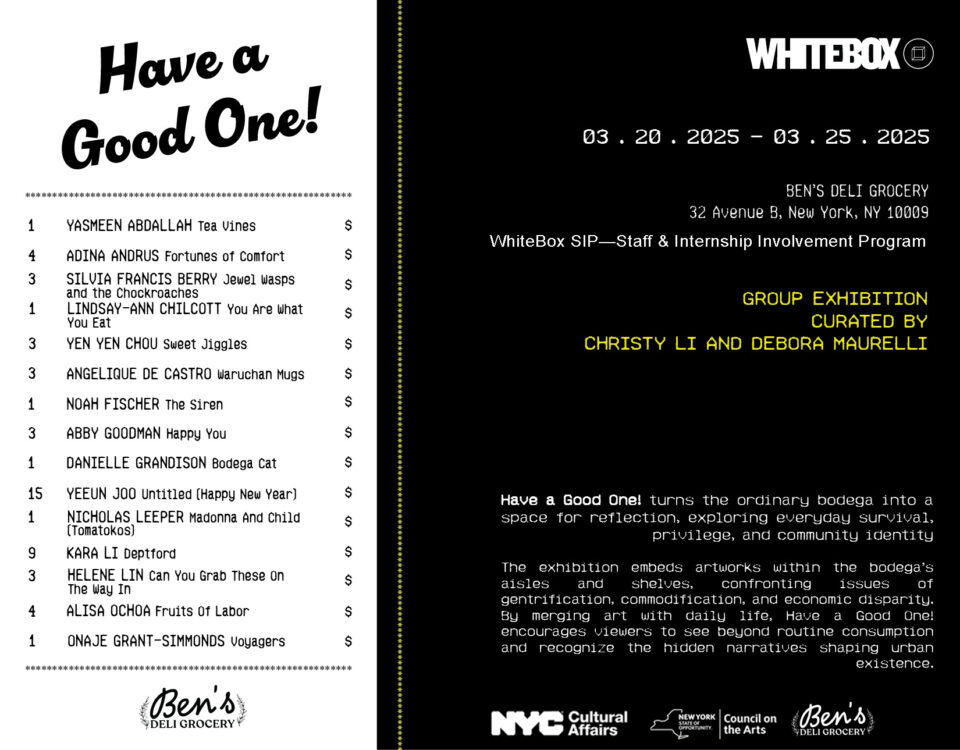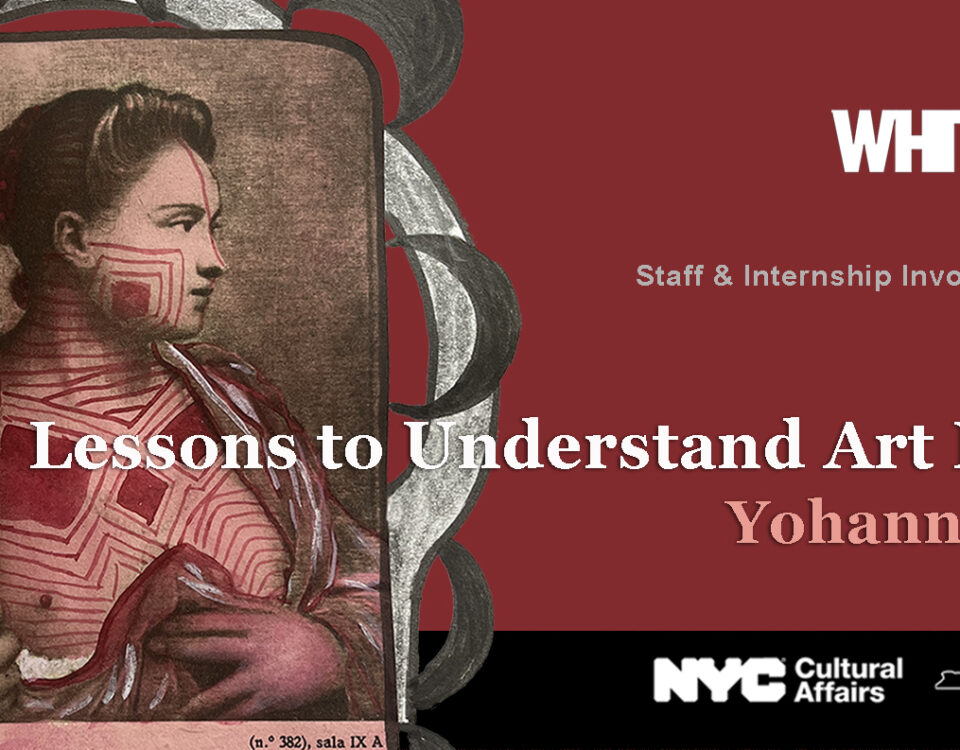Nocturnal Whispers of Pan
June 3, 2020EXODUS III Mexico in New York Conversations: Luis López Loza.
July 2, 2020An Ongoing Exhibition of 100 Pencil Portraits of New Yorkers as Observation of Civility Under our Present Day Covid-19 Pandemic Celebrating Essential Workers
Curated by Kyoko Sato
July 7th – August 7th, 2020
Tuesday July 7, 2020 @ 5 to 7 PM | Opening Reception
Proceeds of Benefit Sale or Commission will support WhiteBox Harlem’s free programs to our underserved Black and Latinx communities

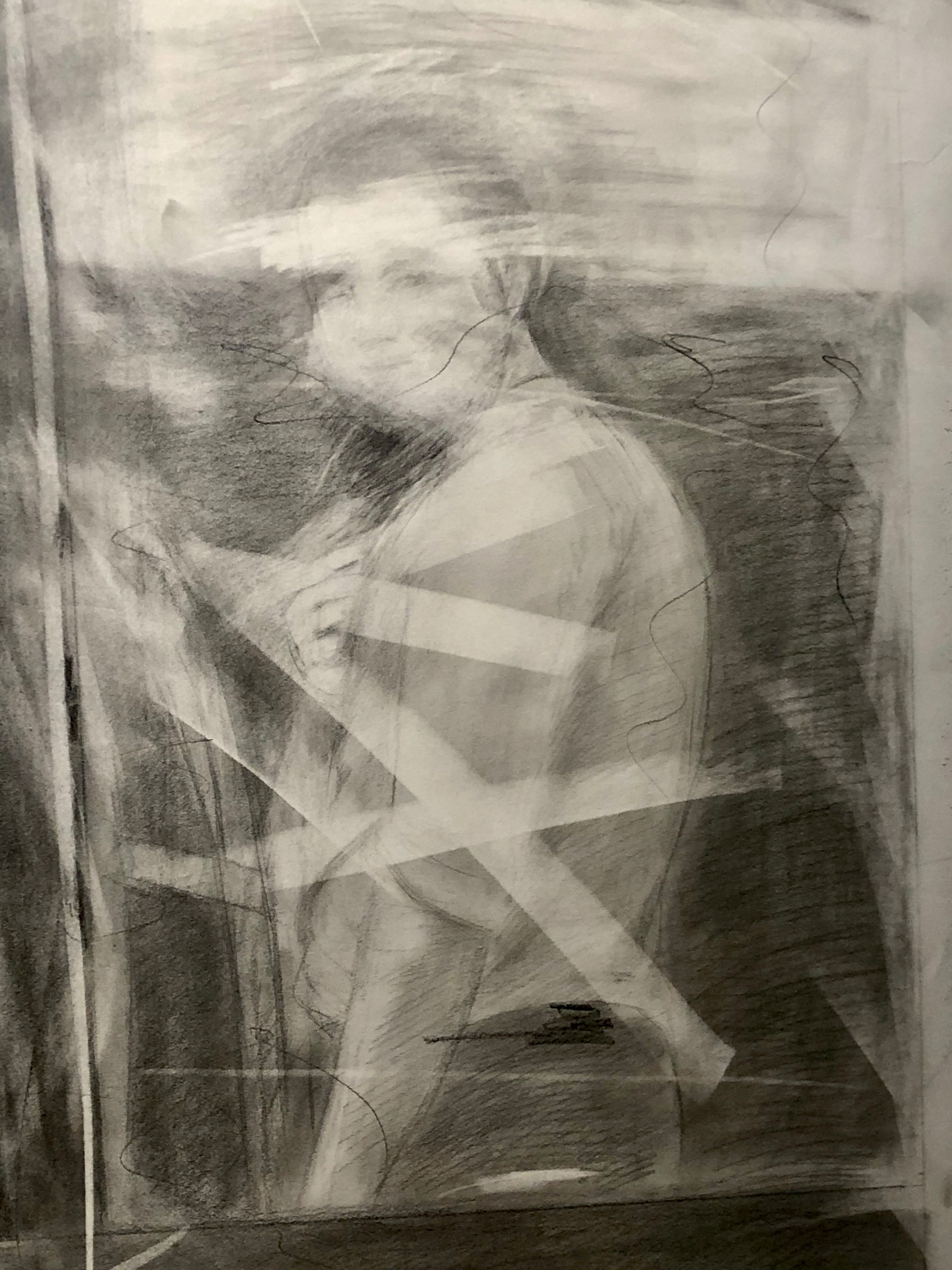
It was in the midst of New York’s Covid-19 pandemic this past April 20th, 2020 at exactly 10:50PM when, guided by my confinement routine, I opened my Facebook Messenger and to my surprise—a chance encounter of sorts, astonished—I saw my own vibrant drawn portrait executed by Loy Luo. It may well be the first time since childhood, that someone has created my portrait outside the typical family snap shot photo. I gave thumbs up and responded, “Wow-Wearing a mask!” and, “Thank you!”. Oddly enough, days later and upon closer examination I found my portrait by Luo not to be a run of the mill ‘it looks like you’ standard portrait any artist can render. This was not due to any lack of skill whatsoever, but rather a synthesis of my inner self captured in an eloquent vibrant image of me seen from the outside in. The artist had in mind a quest to find her inner self in the portraying of the other. In the case of this exhibition; 100 New Yorkers living under the pandemic. Understood as a celebration of resilience, a trait New Yorkers have earned after enduring other milestone moments like 9/11, it may be notable to point out that in seeing my inner self surreptitiously described by my portrait, I also noticed her presence in me thus perfectly enshrining the exhibition’s title “The Other I – The Me in the Other.”
Luo arrived in New York on January 9, 2020, as WhiteBox was installing a momentous exhibition by Wuhan based artist Ke Ming. Ke Ming was kept from traveling to NYC due to the early Coronavirus explosion his city experienced rendering the entire eleven million city souls fully confined. The opening of the exhibition took place on February 8th with the artist in absentia. At that point in time, neither Luo nor anyone at WhiteBox imagined New York would end up in exactly the same predicament.
Everything in New York City was new to her. On February 23rd, Luo took a photograph of “The Ride NYC”, a long run sightseeing entertainment bus whose concept is the street as theatre. The audiences were innocently enjoying viewing the theatre taking place on the street. She made a drawing out of that photograph. In the drawing, we can hear the sound of a clock ticking before the virus or disaster arrives to the city.
At Times Square, she witnessed some artists were drawing portraits outside the studio. It was the day after her witnessing of The Ride bus, on February 24th, that Luo started to create a portrait. Eager to survive mentally and physically in this largest city in the world under the sign of the snaking danger of the virus she then began to search for all kinds of people on the street to draw portraits; white, black, brown, yellow, red, old, young, mother, child, man, woman, and all LGTBQ. She has been drawing not only human beings. During the stay at home order many people become lonely, and adopted dogs as companions, creatures the artist would also portray.
Luo says that her ‘portrait performances’ under the pandemic have made people happy. She also says making portraits have made her feel good. I see the artist as in conversation with a person while making his or her portrait. It is a way of being together, a way of not being scared or lonely. When a person, including me, receives a portrait, one feels cared for by her. Indeed, making portraits is contributing to the healing process for both herself and the other who receives the drawing.
Luo’s performance reminds me of Naoto Nakagawa who is a Japanese master painter based in New York since the 1960s. He flew to the northeast region of Japan after a huge earthquake followed by a Tsunami took almost 16,000 lives in 2011. He visited anonymous people there to create a thousand portraits. He made the last portrait of a 4 year-old boy in a nursery. I remember him telling me that, “Japan is the country I am from. I wanted to do something for my country.” It is his belief that an artwork without love is valueless. With this I totally agree. The pandemic seems to affirm the theory of French social philosopher Jacques Attali that thinking about the other and their benefit will benefit ourselves at the same time.
Both Luo and Nakagawa instinctively embody Attali’s theory. Making such art projects happen fulfills both themselves and others around them. Luo came to New York to find her identity and ended up inside the hot spot of a pandemic. She has been successful in finding herself through touching a hundred other souls.
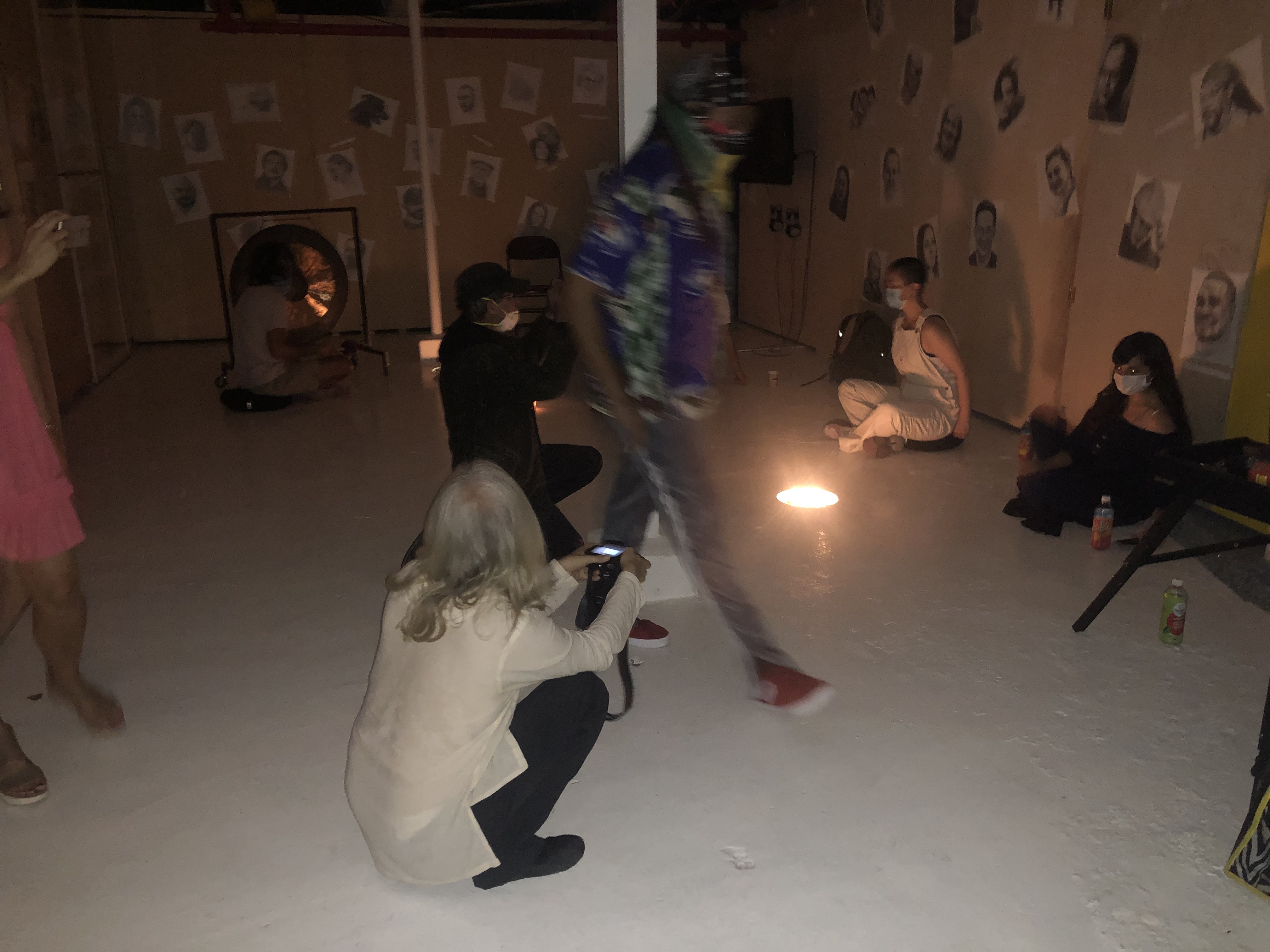
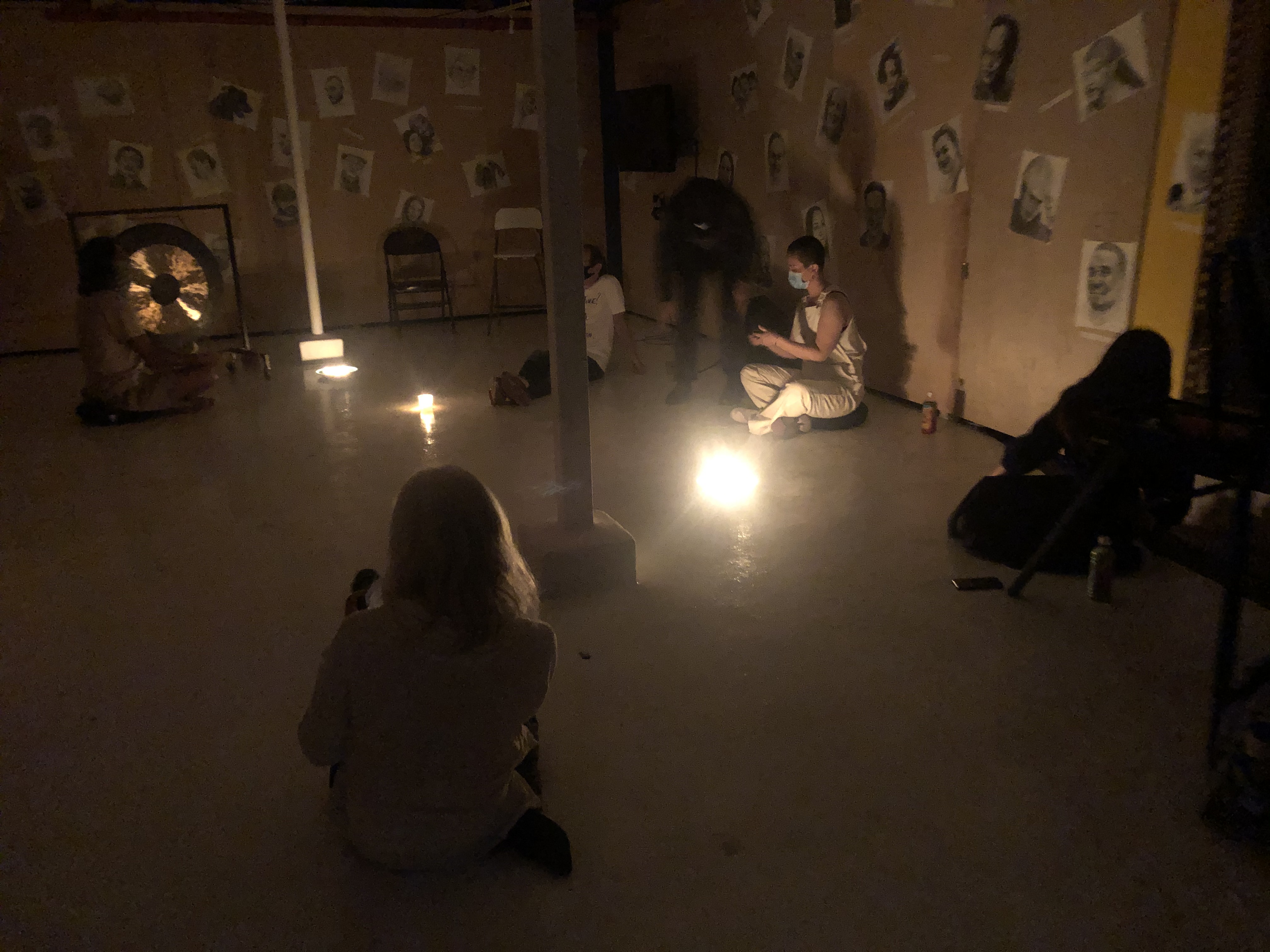
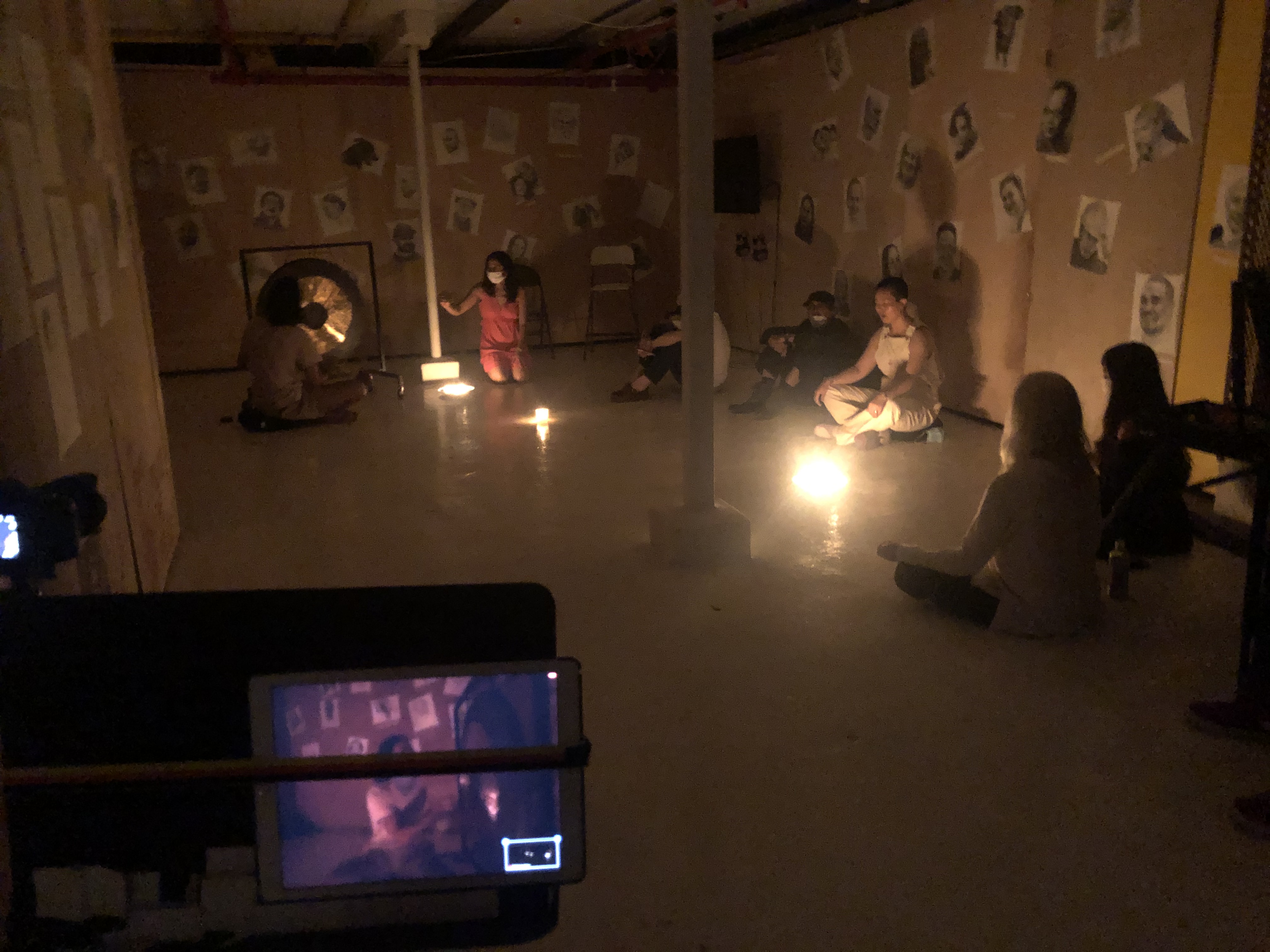
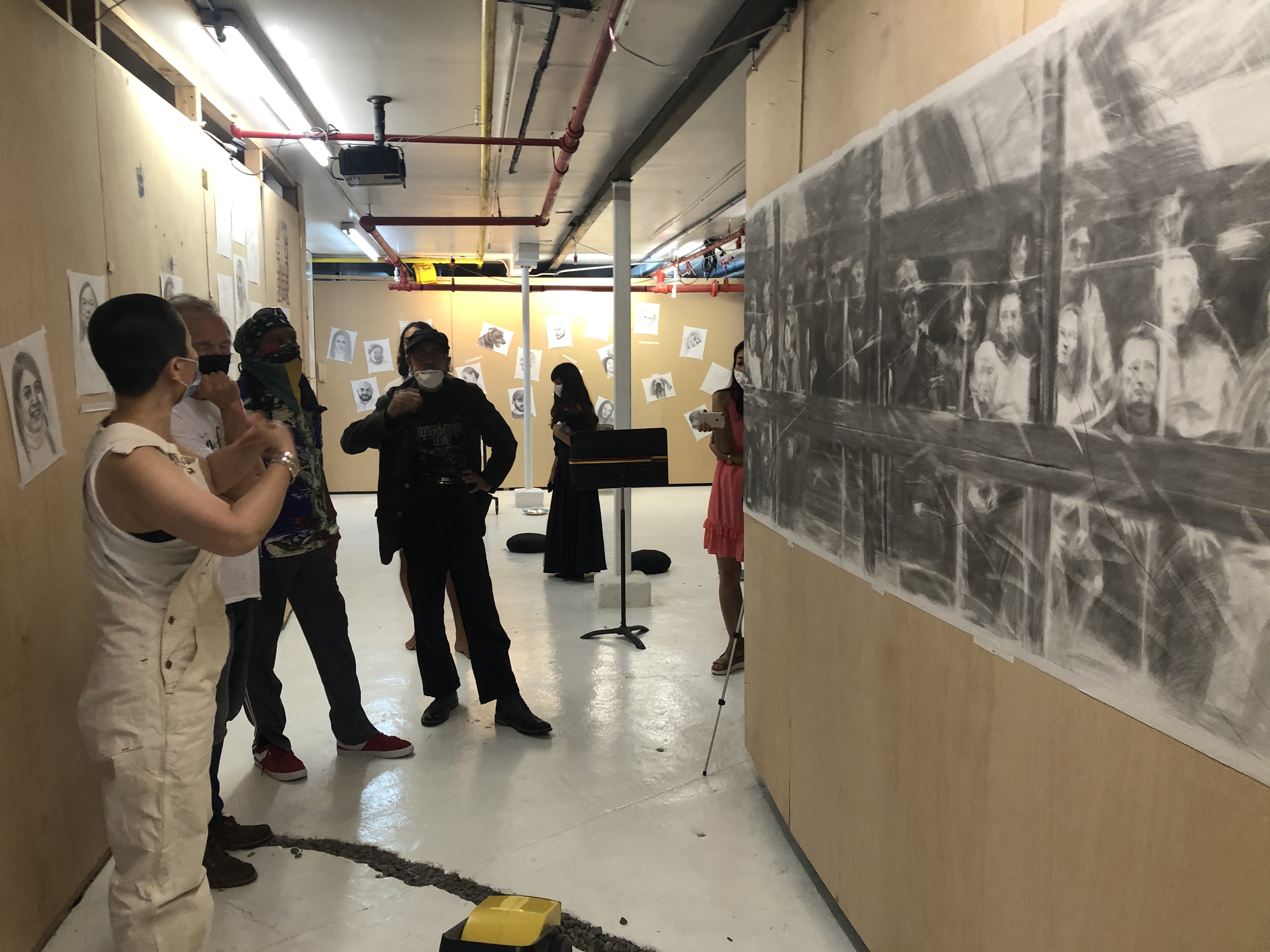
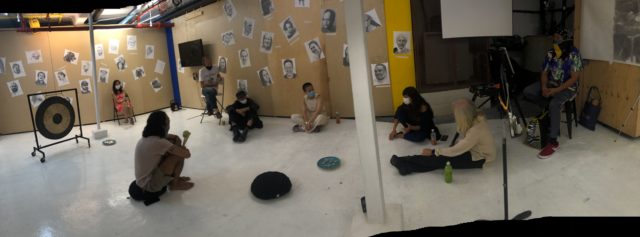
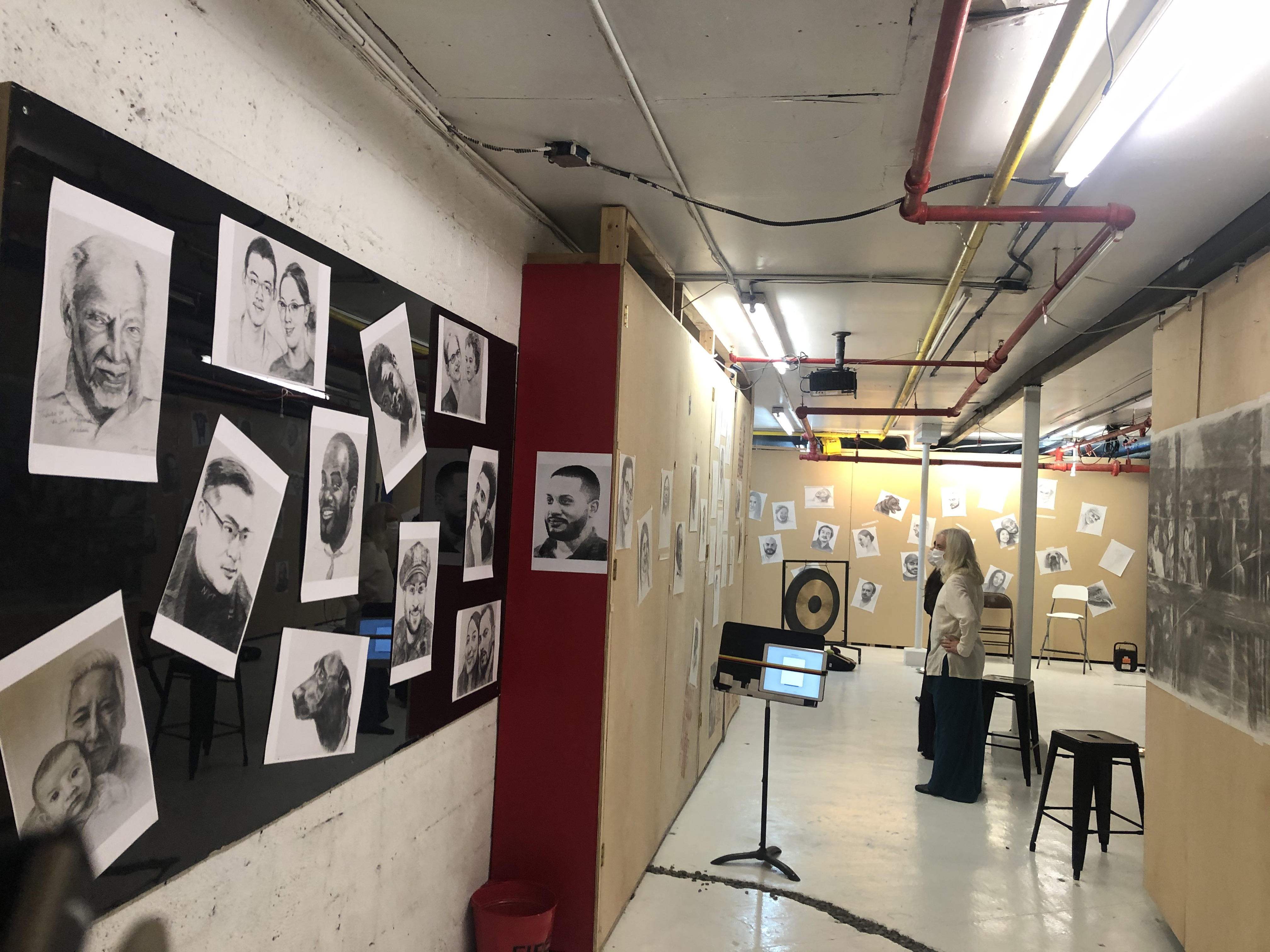
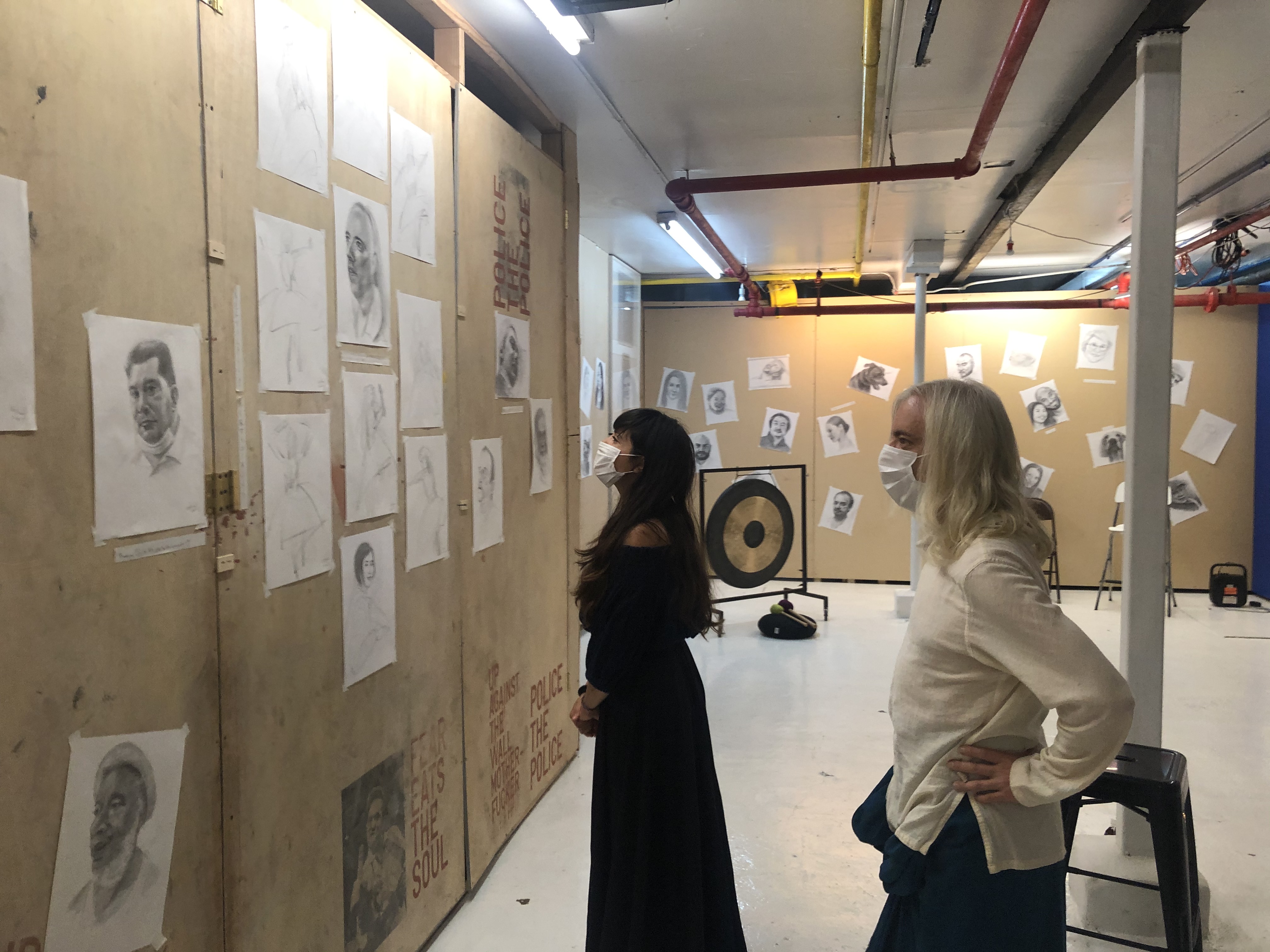
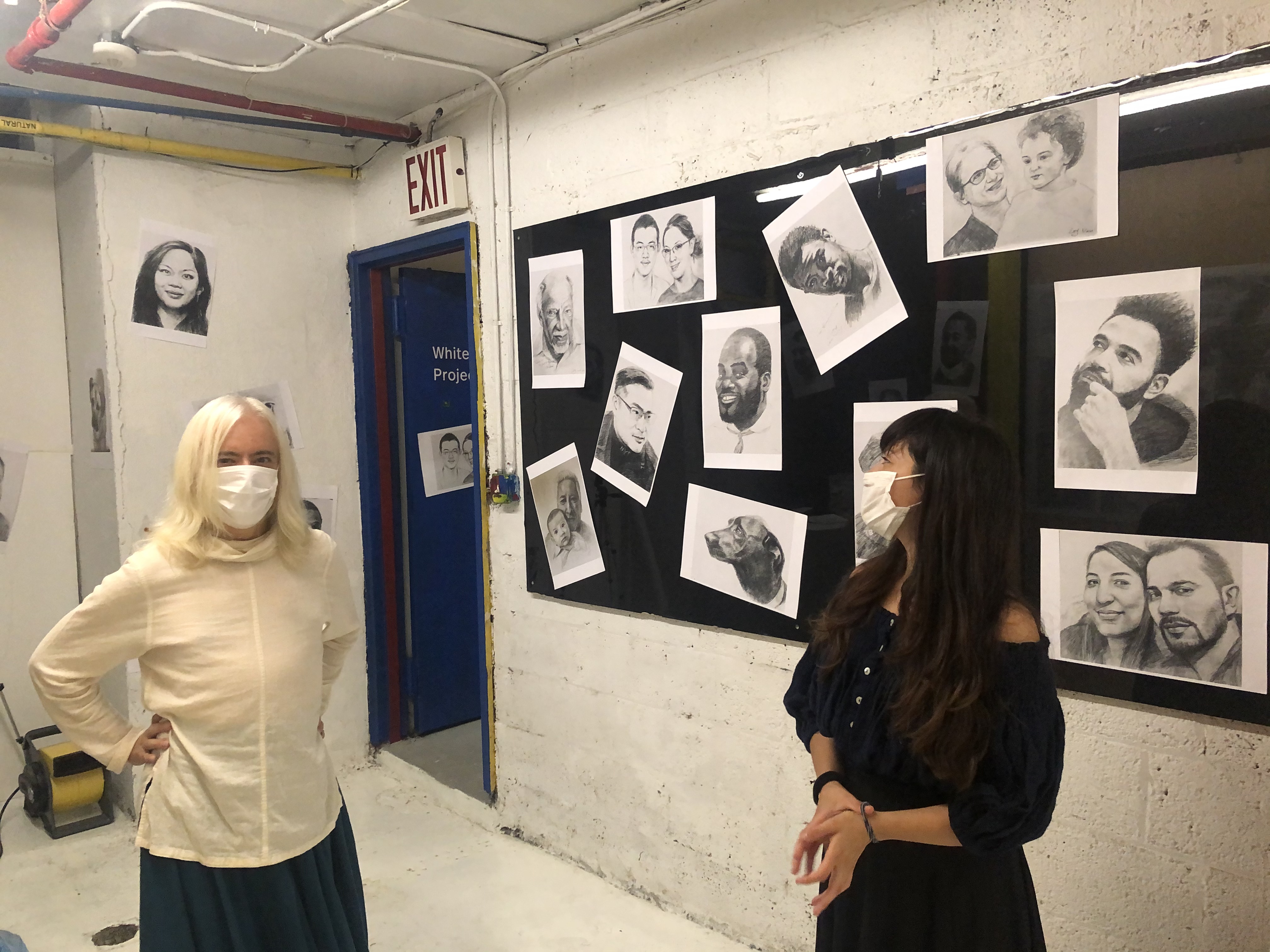
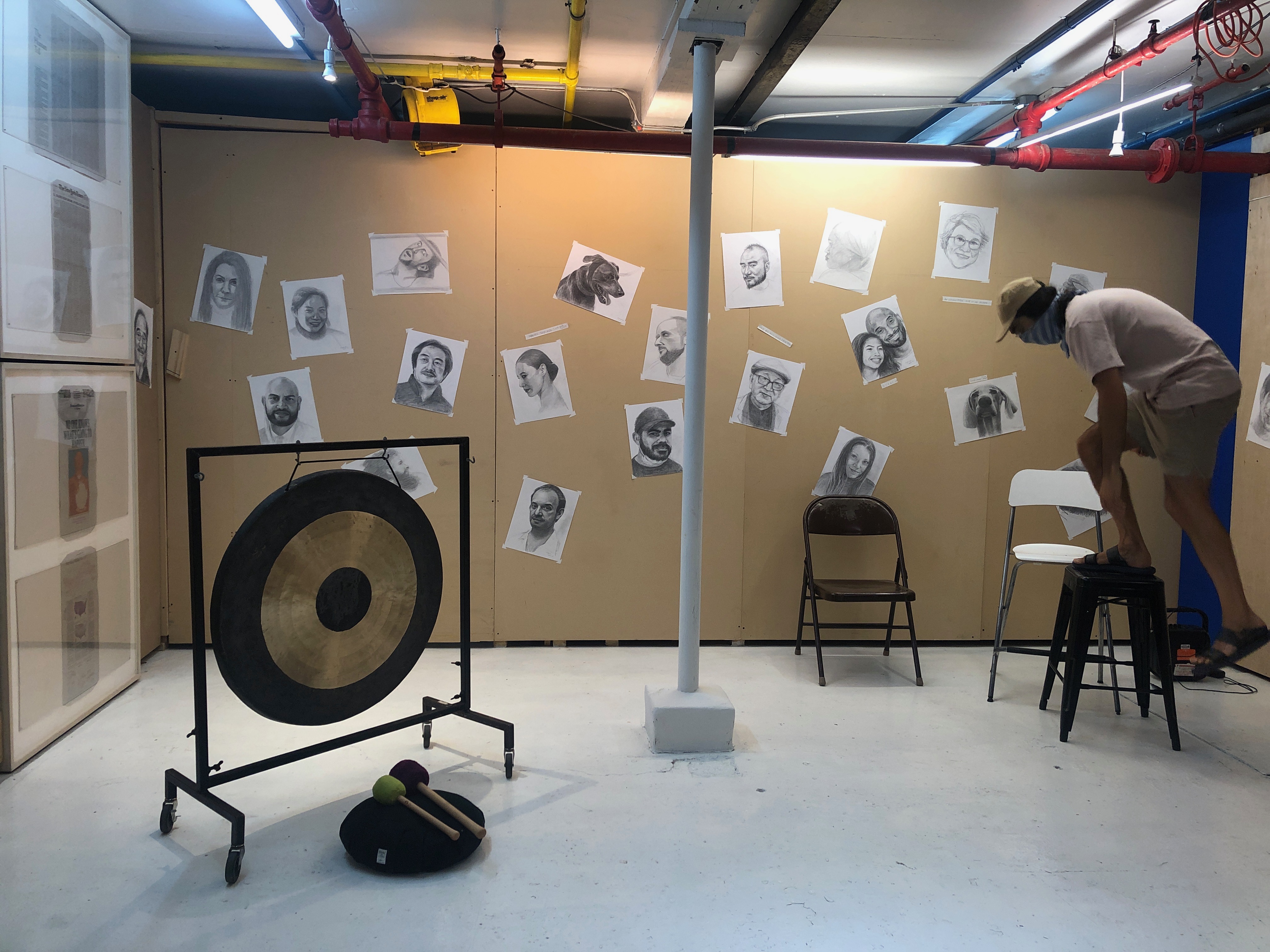
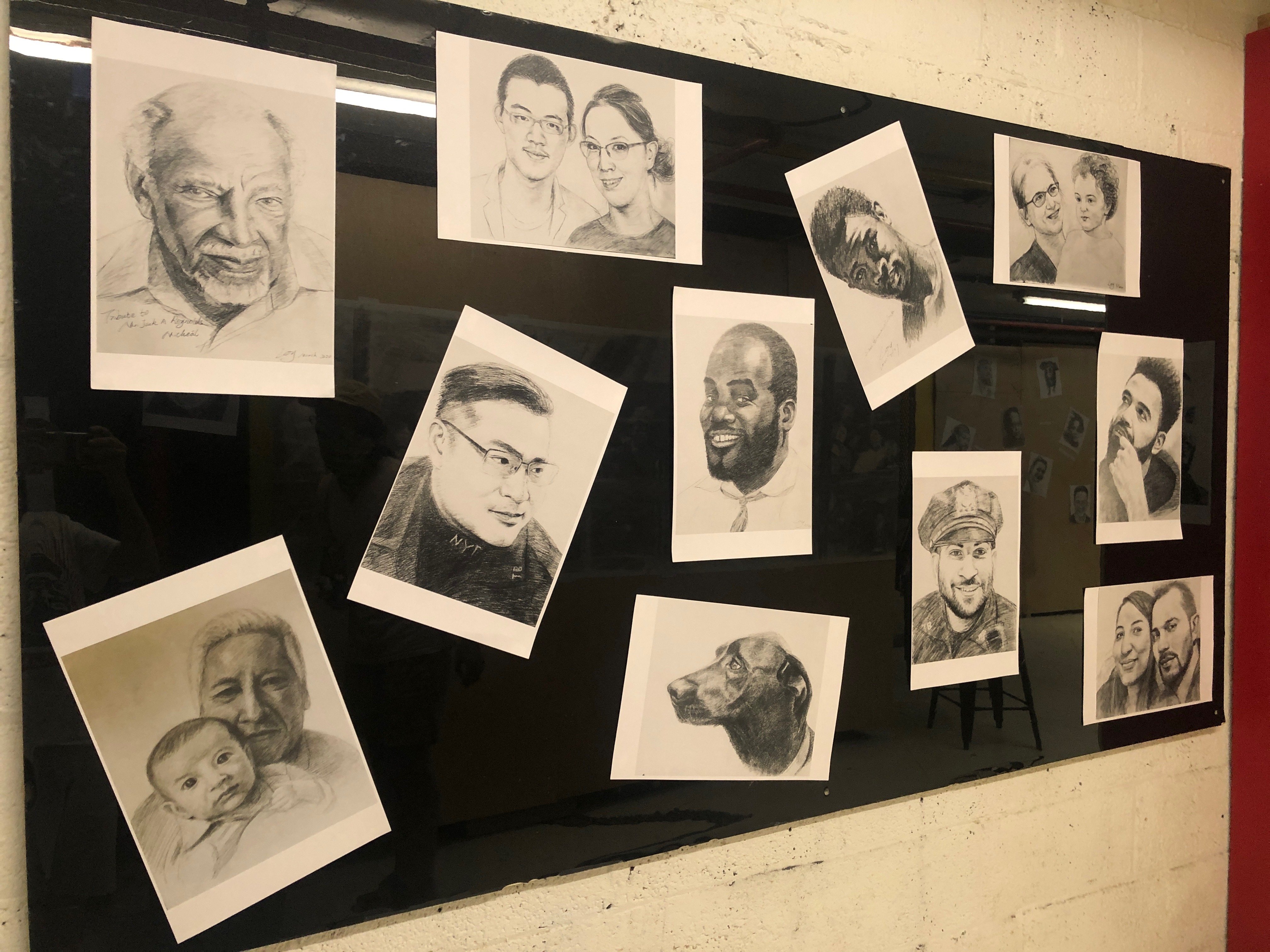
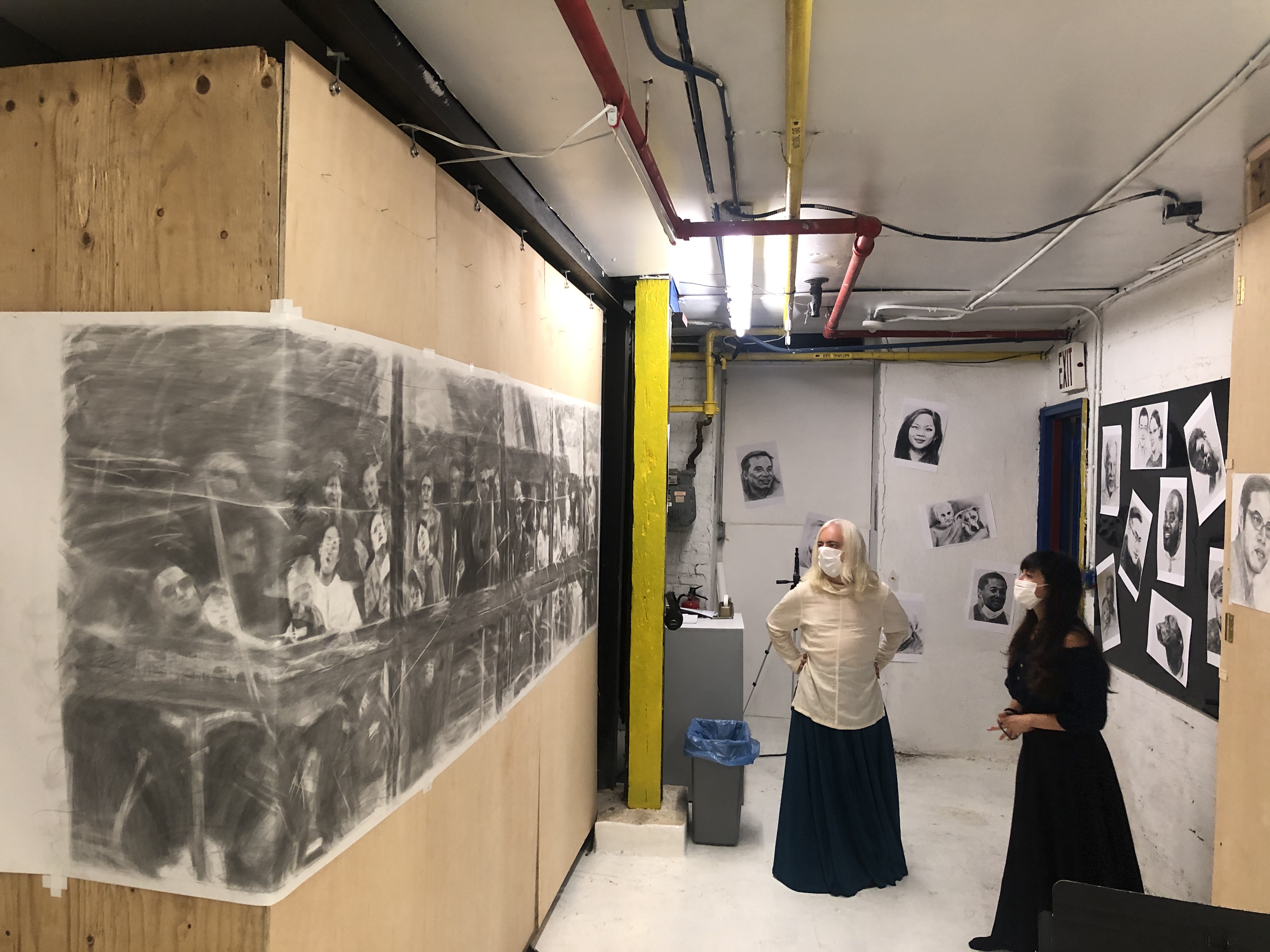
Biography
Loy Luo
Loy Luo is a Chinese artist who lives and works in Beijing. She was born in Nanchang, Jiangxi Province in 1972. She is currently artist-in-residence at WhiteBox Harlem Project Space where she has been working on a performance portrait project since her arrival.
Luo creates abstract paintings and sculptures. She received her MFA from the Beijing Institute of Fashion Technology in 2010 and taught art at the University of Science and Technology, Beijing from 2010-2012. Luo contributes art reviews for Artron.Net.
Her works have been exhibited in China, Italy and France. Her solo exhibitions include: “Mirror” at Anaya Beach Art Fair (Heibei, China); “Stillness” at Beijing Jindu Art Center (China) in 2018; “Dance Together” at Fun Space Gallery (Rome, Italy) in 2016, and “Suspending” at 798 Ning Space Gallery (Beijing, China) in 2015. Luo has participated in numerous group shows including: The Beijing Flash Biennale (China 2019); the Shouzhou Jinji Lake Art Museum (Jiangsu, China, 2019); the Castello Savelli Festival (Rome, Italy, 2019; the San Venanzio Architecture Exhibition (Rome, Italy, 2018); “Poetry, Medium Domain” China Contemporary Abstract Sculpture Art Exhibition organized by China World National Culture Exchange Promotion Association and Sculpture Magazine (Beijing, China, 2016); the Chinese Businessmen Museum (Beijing, China, 2015), and the Changdu International Art Exposition (Sichuan, China, 2014). Her works are held in private and public collections including the Ruijin Museum in Jiangxi, and the Jindu Art Center in Beijing.
This exhibition was made possible by support from the New York City Department of Cultural Affairs



